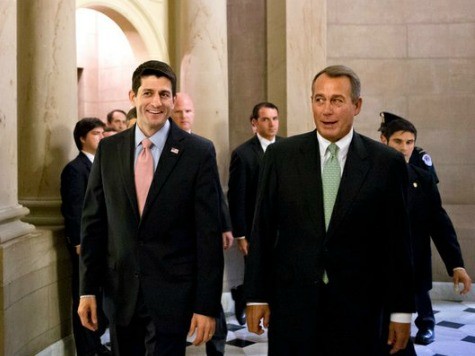
As Rep. Paul Ryan and Sen. Patty Murray finalize negotiations over a 2-year budget deal, the two sides seem to have agreed to eliminate around $30 billion in planned spending cuts for next year. The cuts are part of sequestration, which triggers automatic, across-the-board spending cuts in all discretionary spending. Rather than replacing these with targeted cuts elsewhere in the budget, however, the GOP seems ready to agree to “long-term” budget savings instead. Unfortunately, these long-term savings rarely materialize.
Under the Budget Control Act, which triggers sequestration, discretionary spending is set to fall from $986 billion this year to $967 billion next year. That may look like a cut of $19 billion, but in Washington budget-speak its a cut of $109 billion. In DC, a cut isn’t measured against how much the government actually spent, but what it would have spent had certain growth assumptions been included in the budget.
According to reports, Ryan and Murray have agreed to set discretionary spending at just over $1 trillion next year. The difference between sequester levels and their agreement would be covered by “future” savings in entitlements, principally tweaks in benefits calculations. A portion of the increased spending would also be covered by increases in government “user fees.” In other words, spending would increase next year, covered by increased government revenue and “future” savings.
The sequester cuts are a terrible way to cut government spending. The cuts fall disproportionally on the military. Also, because they are “across-the-board” the cuts hit vital and inefficient programs equally. The Pentagon and other federal agencies have very little flexibility in applying the required cuts.
They did have the advantage of being actual cuts to spending. They forced the government to cut spending each year, rather than promise future savings far out in the future.
Rather than simply eliminate the spending cuts, Ryan and the GOP could have given agencies the flexibility to apply the cuts to wasteful or inefficient programs. They could have let them experiment with innovations to deliver services more efficiently. Instead, they seem to have resorted to the traditional Washington budgetary bag of tricks.
For the past several decades, most budgets have increased spending and promised future savings that would not only pay for the spending, but reduce future deficits. This habit has delivered a $17 trillion national debt.

COMMENTS
Please let us know if you're having issues with commenting.